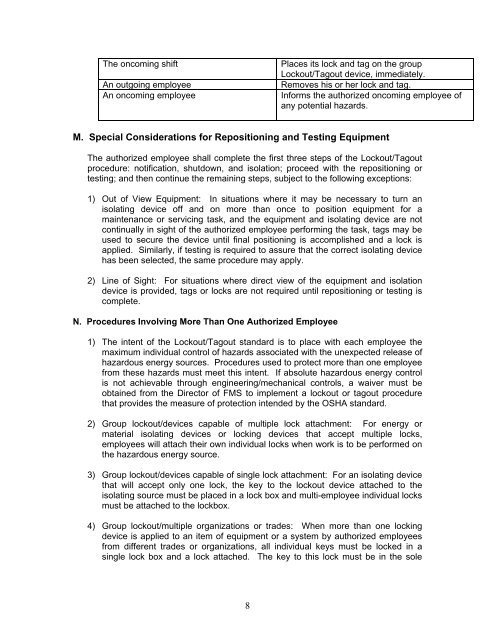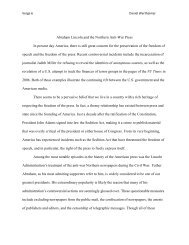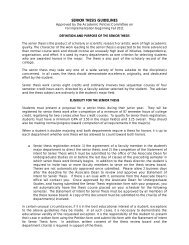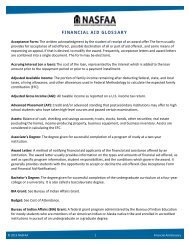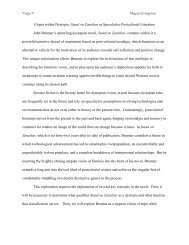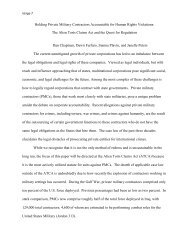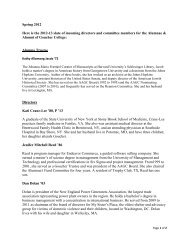Control of Hazardous Energy Lockout-Tagout ... - Goucher College
Control of Hazardous Energy Lockout-Tagout ... - Goucher College
Control of Hazardous Energy Lockout-Tagout ... - Goucher College
Create successful ePaper yourself
Turn your PDF publications into a flip-book with our unique Google optimized e-Paper software.
The oncoming shift<br />
An outgoing employee<br />
An oncoming employee<br />
Places its lock and tag on the group<br />
<strong>Lockout</strong>/<strong>Tagout</strong> device, immediately.<br />
Removes his or her lock and tag.<br />
Informs the authorized oncoming employee <strong>of</strong><br />
any potential hazards.<br />
M. Special Considerations for Repositioning and Testing Equipment<br />
The authorized employee shall complete the first three steps <strong>of</strong> the <strong>Lockout</strong>/<strong>Tagout</strong><br />
procedure: notification, shutdown, and isolation; proceed with the repositioning or<br />
testing; and then continue the remaining steps, subject to the following exceptions:<br />
1) Out <strong>of</strong> View Equipment: In situations where it may be necessary to turn an<br />
isolating device <strong>of</strong>f and on more than once to position equipment for a<br />
maintenance or servicing task, and the equipment and isolating device are not<br />
continually in sight <strong>of</strong> the authorized employee performing the task, tags may be<br />
used to secure the device until final positioning is accomplished and a lock is<br />
applied. Similarly, if testing is required to assure that the correct isolating device<br />
has been selected, the same procedure may apply.<br />
2) Line <strong>of</strong> Sight: For situations where direct view <strong>of</strong> the equipment and isolation<br />
device is provided, tags or locks are not required until repositioning or testing is<br />
complete.<br />
N. Procedures Involving More Than One Authorized Employee<br />
1) The intent <strong>of</strong> the <strong>Lockout</strong>/<strong>Tagout</strong> standard is to place with each employee the<br />
maximum individual control <strong>of</strong> hazards associated with the unexpected release <strong>of</strong><br />
hazardous energy sources. Procedures used to protect more than one employee<br />
from these hazards must meet this intent. If absolute hazardous energy control<br />
is not achievable through engineering/mechanical controls, a waiver must be<br />
obtained from the Director <strong>of</strong> FMS to implement a lockout or tagout procedure<br />
that provides the measure <strong>of</strong> protection intended by the OSHA standard.<br />
2) Group lockout/devices capable <strong>of</strong> multiple lock attachment: For energy or<br />
material isolating devices or locking devices that accept multiple locks,<br />
employees will attach their own individual locks when work is to be performed on<br />
the hazardous energy source.<br />
3) Group lockout/devices capable <strong>of</strong> single lock attachment: For an isolating device<br />
that will accept only one lock, the key to the lockout device attached to the<br />
isolating source must be placed in a lock box and multi-employee individual locks<br />
must be attached to the lockbox.<br />
4) Group lockout/multiple organizations or trades: When more than one locking<br />
device is applied to an item <strong>of</strong> equipment or a system by authorized employees<br />
from different trades or organizations, all individual keys must be locked in a<br />
single lock box and a lock attached. The key to this lock must be in the sole<br />
8


